Waveguide Isolator Suppliers & Factory
When your high-power RF system experiences unexpected component failures, signal degradation, or costly downtime due to reflected power, the root cause often traces back to inadequate isolation protection. Modern satellite communications, defense radar systems, and aerospace applications demand reliable protection against destructive reflections that can compromise mission-critical operations. This comprehensive guide explores how partnering with the right waveguide isolator suppliers and factory, specifically for High Power Waveguide Isolator solutions, can safeguard your investment while ensuring optimal system performance across demanding environments from extreme temperatures to high-power transmission scenarios.
Understanding High Power Waveguide Isolator Technology
High Power Waveguide Isolator technology represents a critical advancement in microwave engineering, serving as the protective barrier between sensitive transmitters and potentially damaging reflected signals. These non-reciprocal ferrite devices function as one-way valves for electromagnetic energy, permitting signal flow in the forward direction while absorbing or redirecting reflections that could otherwise cause catastrophic equipment failure. The operational principle relies on the unique properties of ferrite materials under magnetic bias, creating a differential phase shift that enables forward transmission while suppressing reverse propagation. In contemporary microwave systems operating across satellite communications, military radar installations, and industrial processing applications, the High Power Waveguide Isolator must withstand power levels exceeding 1000 watts while maintaining insertion loss below 0.3 dB. Advanced manufacturing techniques employed by leading suppliers optimize the ferrite circulator design, precision-machining waveguide interfaces, and thermal management systems to ensure consistent performance across frequency ranges spanning 0.5 GHz to 110 GHz. The aluminum and copper construction materials provide excellent thermal conductivity, essential for dissipating heat generated during high-power operation, while maintaining structural integrity across operating temperatures from negative forty to positive seventy degrees Celsius.
Technical Specifications That Define Quality Isolators
When evaluating High Power Waveguide Isolator performance, several technical parameters determine suitability for specific applications. Isolation performance typically measures twenty decibels or higher, quantifying the device's effectiveness in suppressing reverse signal propagation. This specification becomes particularly critical in protecting expensive amplifiers and transmitters from reflected power that results from antenna mismatches, weather-induced impedance variations, or system component failures. The isolation bandwidth of 800 MHz ensures adequate protection across operational frequency ranges, accommodating signal modulation schemes and frequency-hopping communication protocols. Insertion loss represents another crucial specification, with typical values around 0.3 dB indicating minimal signal attenuation in the forward direction. Lower insertion loss translates directly to improved system efficiency, reduced power consumption, and enhanced signal-to-noise ratios in communication links. For space-constrained installations aboard satellites, aircraft, or naval vessels, the compact design of modern High Power Waveguide Isolator assemblies maximizes power handling capability while minimizing weight and volume penalties. The voltage standing wave ratio performance, typically maintained below 1.4 to 1, ensures efficient power transfer and minimizes signal reflections at the isolator interfaces themselves.

Manufacturing Excellence in Waveguide Isolator Production
Leading waveguide isolator suppliers and factory operations distinguish themselves through rigorous quality control protocols, advanced testing capabilities, and comprehensive certification standards. Manufacturing facilities equipped with state-of-the-art measurement systems can verify High Power Waveguide Isolator performance across complete frequency ranges, validating insertion loss, isolation, and power handling specifications before customer delivery. The integration of near-field and far-field antenna measurement chambers, such as the twenty-four-meter microwave darkroom facilities, enables precise characterization of radiation patterns and coupling efficiency for feed network assemblies incorporating isolator components. Quality assurance programs aligned with ISO 9001:2015 standards ensure consistent product reliability through documented design control, material traceability, and statistical process monitoring. Environmental management systems complying with ISO 14001:2015 requirements minimize manufacturing ecological impact through waste reduction, energy conservation, and emissions control initiatives. Occupational health and safety protocols following ISO 45001:2018 guidelines protect skilled technicians and engineers who fabricate precision ferrite assemblies and perform complex tuning procedures essential for optimal High Power Waveguide Isolator performance.
Selecting the Right Waveguide Isolator Suppliers and Factory
Choosing appropriate waveguide isolator suppliers and factory partners requires careful evaluation of technical capabilities, manufacturing infrastructure, and application-specific expertise. Prospective buyers should prioritize suppliers offering comprehensive product lines spanning multiple waveguide sizes from WR10 through WR2300, covering applications from Ka-band satellite communications through UHF industrial processing systems. The ability to provide customized frequency ranges, power handling specifications, and mechanical configurations indicates manufacturing flexibility essential for addressing unique system requirements.
Evaluating Supplier Technical Capabilities
Superior waveguide isolator suppliers maintain advanced laboratory facilities equipped with network analyzers, spectrum analyzers, and high-power test stations capable of verifying performance up to 110 GHz. These measurement capabilities enable thorough characterization of High Power Waveguide Isolator electrical parameters including frequency response, return loss, group delay, and thermal stability across operational temperature ranges. Suppliers offering rapid prototyping services can quickly produce sample units for customer evaluation, accelerating design validation cycles and reducing time-to-market for new system developments. Technical support represents another differentiating factor among waveguide isolator suppliers and factory operations. Engineering teams with deep expertise in ferrite device physics, electromagnetic simulation, and thermal analysis can assist customers in selecting optimal isolator configurations for specific applications. This consultative approach proves invaluable when addressing challenging requirements such as ultra-wideband operation, extreme environmental conditions, or integration with complex feed network architectures. Access to application notes, design guides, and technical documentation further enhances the customer experience, providing valuable reference materials for system integration and troubleshooting procedures.
Critical Applications for High Power Waveguide Isolators
High Power Waveguide Isolator applications span diverse industries including satellite communications, defense systems, aerospace navigation, and telecommunications infrastructure. In satellite ground stations, these isolators protect expensive high-power amplifiers from antenna impedance variations caused by weather conditions, ensuring reliable uplink transmission for video broadcasting, data communications, and voice services. The ability to handle kilowatt-level power while maintaining low insertion loss proves essential for maximizing effective radiated power and link budget margins in long-distance space communications. Military surveillance radar systems rely on High Power Waveguide Isolator protection to maintain transmitter stability while detecting and tracking targets across cluttered environments. The isolators prevent reflected energy from phased array antenna elements from coupling back into sensitive receiver channels, preserving system sensitivity and target discrimination capabilities. Air traffic control radar installations similarly depend on robust isolation performance to ensure accurate aircraft position tracking regardless of atmospheric conditions or terrain reflections. Telecommunications networks incorporate High Power Waveguide Isolator components within base station transmitter chains, point-to-point microwave links, and repeater amplifiers. These isolators enable reliable signal propagation across challenging propagation paths, bringing high-speed internet connectivity to rural communities and supporting industrial Internet of Things deployments. The low-cost and fast-delivery characteristics offered by efficient waveguide isolator suppliers make these protective devices economically viable even for cost-sensitive commercial applications.
Advanced Manufacturing and Customization Services
Leading waveguide isolator suppliers and factory operations offer extensive original equipment manufacturer services tailored to customer-specific requirements. Customization capabilities encompass frequency band optimization, power level scaling, mechanical interface adaptation, and specialized environmental protection features. Engineers work collaboratively with customers to develop High Power Waveguide Isolator solutions addressing unique challenges such as extreme temperature operation, vacuum compatibility for space applications, or integration within pressurized waveguide systems.
Custom Design and Rapid Prototyping
The custom design process begins with detailed requirements analysis, examining operational frequency ranges, power handling needs, environmental conditions, and mechanical constraints. Electromagnetic simulation tools model isolator performance, optimizing ferrite material selection, magnetic circuit design, and waveguide transitions to achieve target specifications. Rapid prototyping capabilities enable fabrication of sample units within compressed timeframes, allowing customers to perform system-level validation before committing to production quantities. High Power Waveguide Isolator customization extends to specialized material selections, incorporating advanced ferrite compositions for enhanced temperature stability or reduced insertion loss. Precision machining capabilities accommodate non-standard waveguide interfaces, custom flange configurations, and integrated thermal management features such as liquid cooling channels or heat pipe assemblies. Surface treatment options including corrosion-resistant coatings protect isolator assemblies in harsh maritime or aerospace environments where salt spray, humidity, and temperature extremes challenge component reliability.
Quality Assurance and Reliability Testing
Comprehensive quality assurance programs ensure High Power Waveguide Isolator reliability through rigorous testing protocols encompassing electrical performance verification, environmental stress screening, and accelerated life testing. Each production unit undergoes swept frequency measurements validating insertion loss, isolation, and return loss across specified bandwidths. High-power testing confirms capability to withstand rated forward power levels while dissipating absorbed reverse power without thermal runaway or performance degradation. Environmental qualification testing subjects High Power Waveguide Isolator assemblies to temperature cycling, humidity exposure, vibration, and shock loading representative of operational conditions. These tests verify mechanical integrity, maintain electrical performance stability, and identify potential failure modes before field deployment. Long-term reliability testing accumulates operational hours under representative power loading, temperature profiles, and environmental stresses to characterize mean time between failures and support warranty commitments.

Global Supply Chain and Delivery Excellence
Effective waveguide isolator suppliers and factory operations maintain robust supply chain management systems ensuring consistent material availability, shortened lead times, and flexible production scheduling. Strategic relationships with ferrite material suppliers, precision machining contractors, and specialized coating vendors enable rapid response to customer demand fluctuations while maintaining quality standards. Just-in-time manufacturing principles minimize inventory carrying costs while preserving ability to fulfill urgent replacement requirements for critical system repairs.
Logistics and International Shipping
Global customers benefit from experienced international shipping coordination, navigating customs documentation, export licensing requirements, and freight forwarding logistics. High Power Waveguide Isolator shipments receive careful packaging protecting delicate ferrite assemblies and precision-machined interfaces during transportation. Expedited shipping options accommodate emergency replacement needs, minimizing system downtime costs when field failures occur in remote installations or mission-critical applications. Comprehensive after-sales support enhances customer satisfaction through responsive technical assistance, warranty administration, and field service capabilities. Troubleshooting guidance helps customers diagnose system problems, distinguishing isolator performance issues from other potential failure mechanisms. When warranty returns prove necessary, efficient repair and replacement processes minimize equipment out-of-service intervals, maintaining operational availability for critical communication links and radar systems.
Conclusion
Selecting qualified waveguide isolator suppliers and factory partners ensures access to reliable High Power Waveguide Isolator solutions protecting valuable RF system investments while enabling mission success across satellite communications, defense, aerospace, and telecommunications applications. Technical expertise, manufacturing capabilities, and comprehensive support services distinguish leading suppliers in this specialized market segment.
Cooperate with Advanced Microwave Technologies Co., Ltd.
Advanced Microwave Technologies Co., Ltd. stands as your China High Power Waveguide Isolator factory, China High Power Waveguide Isolator supplier, and China High Power Waveguide Isolator manufacturer offering High Power Waveguide Isolator for sale at competitive High Power Waveguide Isolator price points. Our High Quality High Power Waveguide Isolator products and China High Power Waveguide Isolator wholesale programs deliver exceptional value through perfect supply chain systems, rich production experience spanning over twenty years, professional technical research and development teams, fast delivery, price advantages, strict quality control, and strong after-sales capability. With ISO certifications including 9001:2015, 14001:2015, and 45001:2018, our integrated production and research facilities featuring the remarkable twenty-four-meter microwave darkroom enable comprehensive testing up to 110 GHz. Whether you require standard catalog models or customized OEM solutions with specialized frequency ranges, power levels, or mechanical configurations, our expert engineers provide technical support, rapid prototyping, and installation guidance. Contact craig@admicrowave.com today to discuss your High Power Waveguide Isolator requirements and experience why global customers trust Advanced Microwave Technologies for waveguide assemblies, coaxial components, microwave antennas, and satellite communication solutions. Save this resource for future reference when evaluating suppliers for your next critical project.
References
1. Baden Fuller, A.J. "Ferrites at Microwave Frequencies" - Institution of Electrical Engineers Monograph Series
2. Helszajn, Joseph "Ferrite Phase Shifters and Control Devices" - McGraw-Hill Engineering Publications
3. Linkhart, Douglas K. "Microwave Circulator Design" - Second Edition, Artech House Publishers
4. Pozar, David M. "Microwave Engineering" - Fourth Edition, John Wiley & Sons Technical Publications
YOU MAY LIKE
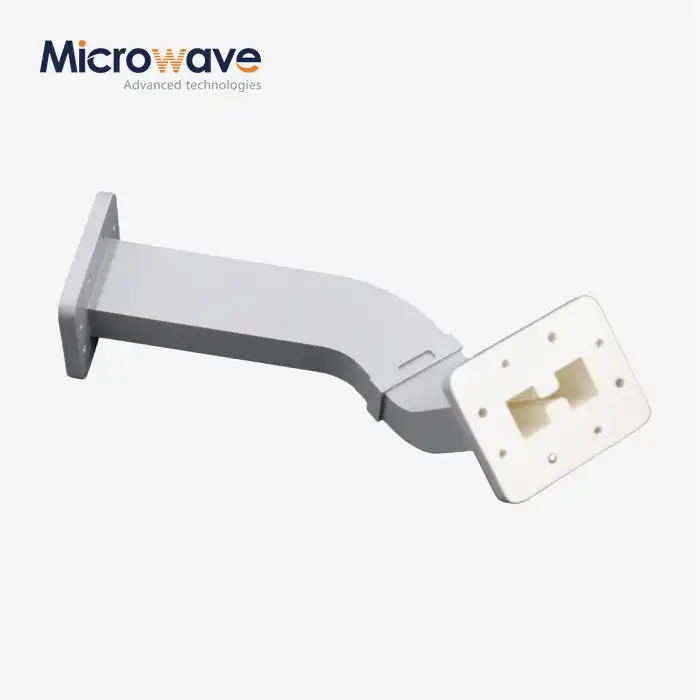 VIEW MOREDouble Ridge Waveguide Bend
VIEW MOREDouble Ridge Waveguide Bend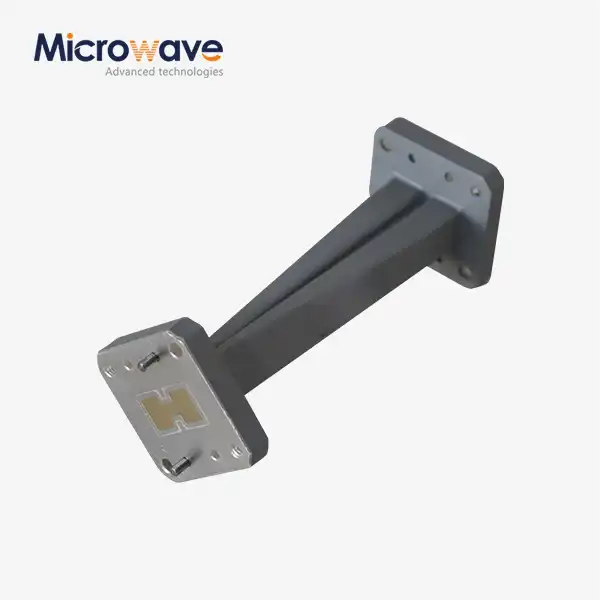 VIEW MOREDouble Ridge Twist Waveguide
VIEW MOREDouble Ridge Twist Waveguide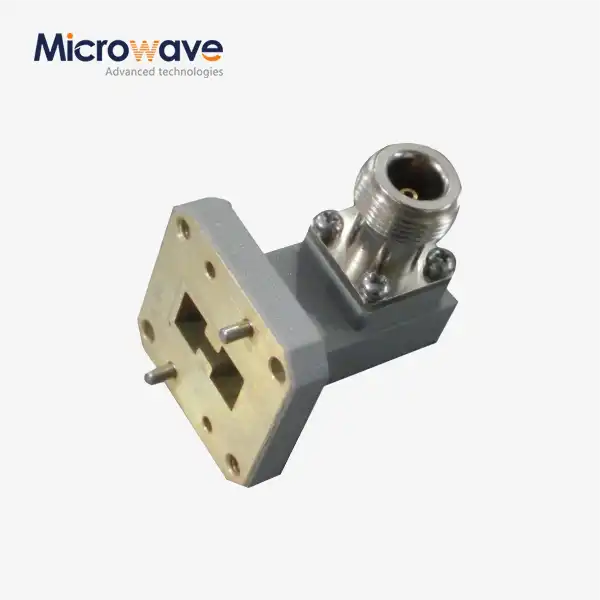 VIEW MOREDouble Ridged WG To Coaxial Adapter
VIEW MOREDouble Ridged WG To Coaxial Adapter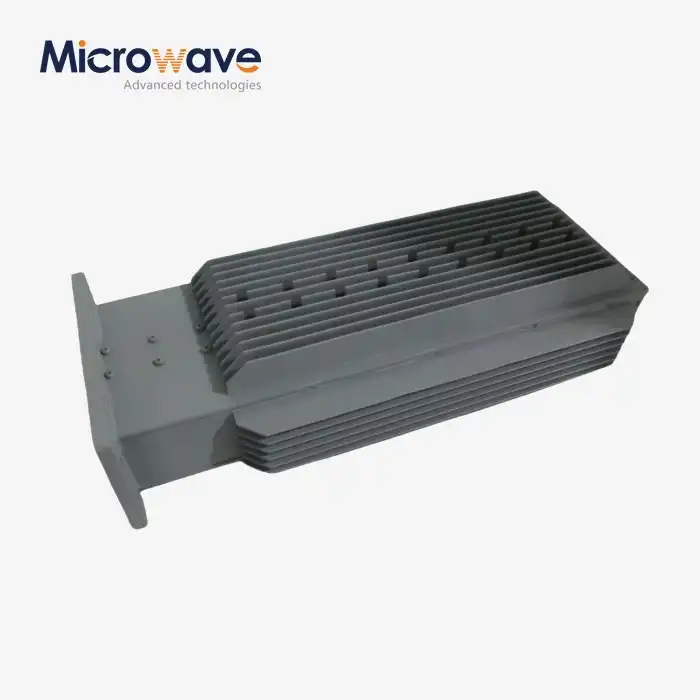 VIEW MOREDouble Ridge Waveguide Load
VIEW MOREDouble Ridge Waveguide Load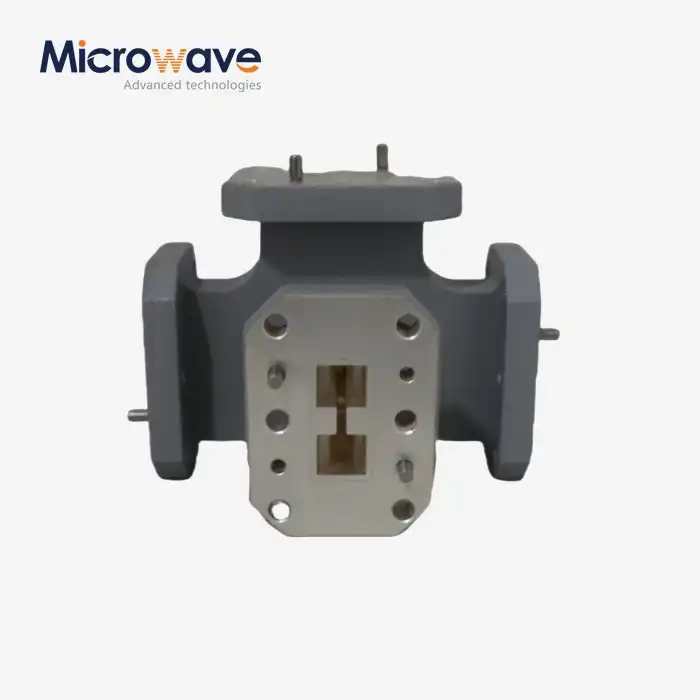 VIEW MOREDouble-Ridged Waveguide Magic Tee
VIEW MOREDouble-Ridged Waveguide Magic Tee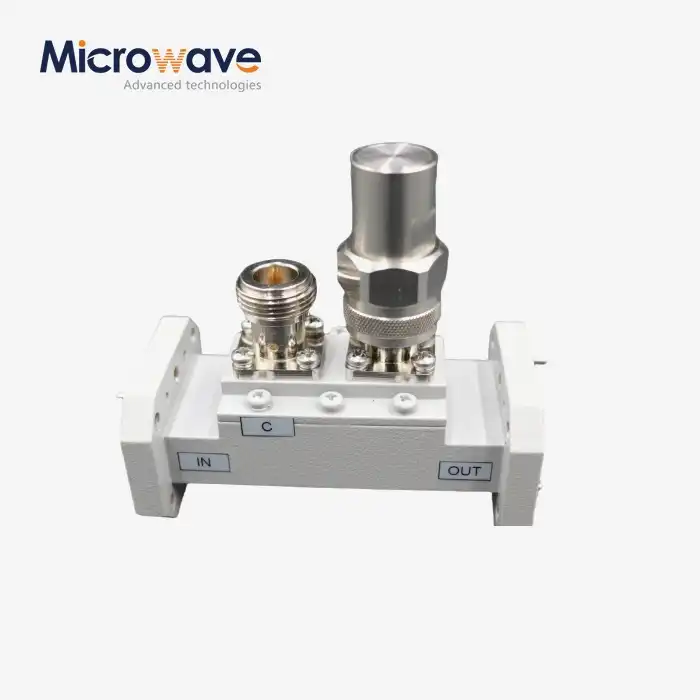 VIEW MOREDouble-Ridged Waveguide Loop Coupler
VIEW MOREDouble-Ridged Waveguide Loop Coupler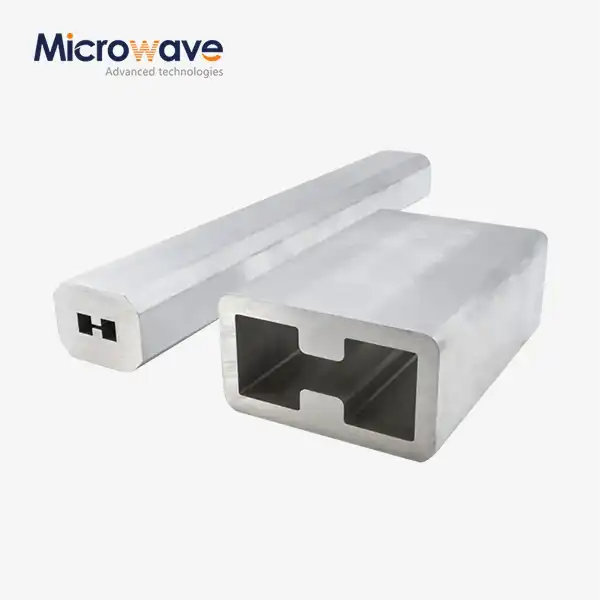 VIEW MOREDouble Ridge Waveguide Tube
VIEW MOREDouble Ridge Waveguide Tube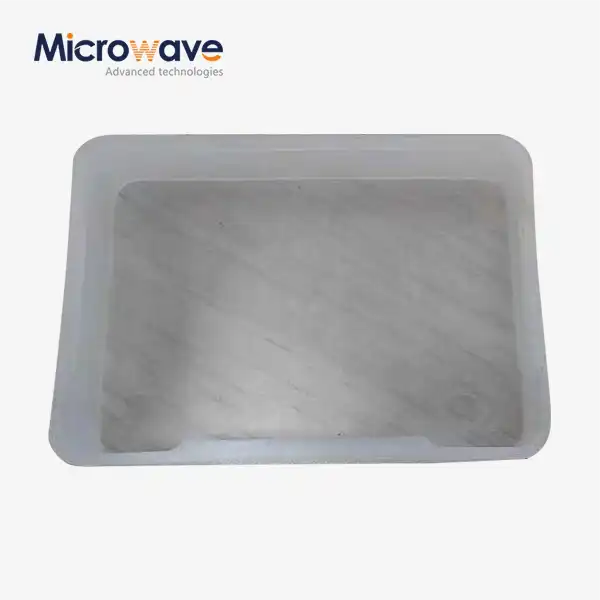 VIEW MOREPlastic Flange Caps
VIEW MOREPlastic Flange Caps




